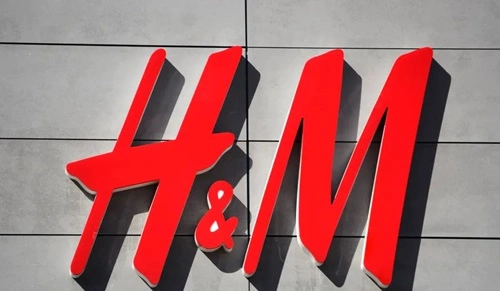H&M (Hennes & Mauritz), the globally renowned fast-fashion retailer, is a favorite among Indian consumers for its trendy clothing, accessories, and home décor items at affordable prices. With its sleek stores and a constant stream of new collections, H&M has solidified its position as a leading brand in the Indian retail market. Entrepreneurs looking to invest in the fashion retail sector often consider H&M as a potential business opportunity.
However, H&M’s operational model in India differs from traditional franchise models. This article explores H&M’s business structure in India, the costs associated with owning a similar fashion store, and potential opportunities for collaboration or investment.
H&M’s Business Model in India

H&M operates in India through its wholly-owned subsidiary, H&M Hennes & Mauritz Retail Private Limited. Unlike other retail brands, H&M does not offer individual franchise opportunities in India or globally. The company prefers to retain full ownership of its stores to maintain strict control over brand identity, customer experience, and operational standards.
While direct franchising is unavailable, entrepreneurs can explore indirect opportunities to collaborate with H&M or invest in similar fashion ventures.
Cost of Operating an H&M-Like Store in India
Although H&M does not provide franchise opportunities, understanding the cost structure of setting up a fast-fashion store gives insight into the investment required to enter the fashion retail sector.
Initial Investment
- Real Estate Costs: H&M stores are typically located in premium malls, high streets, or prime retail hubs. Leasing or purchasing such spaces can cost anywhere between ₹5 lakhs to ₹30 lakhs per month, depending on the location and city.
- Store Setup Costs: Setting up a store with modern interiors, advanced inventory systems, and visual merchandising elements typically requires an investment of ₹3 crores to ₹5 crores.
- Inventory Costs: Fast-fashion brands like H&M require frequent inventory updates. Initial stock purchases can range from ₹2 crores to ₹4 crores, depending on the store size.
- Licenses and Permits: Securing necessary permits for retail operations, including GST registration and local government approvals, may cost an additional ₹5-10 lakhs.
Recurring Costs
- Operational Costs: Monthly expenses, including staff salaries, utilities, and maintenance, can amount to ₹5-10 lakhs, depending on the store size.
- Marketing and Promotions: While H&M handles global and regional marketing campaigns, local advertising or store-specific promotions may require an additional budget of ₹50,000 to ₹1 lakh per month.
Revenue and Profitability of an H&M Store
H&M stores are known for their profitability due to their efficient inventory turnover and strong brand appeal. Here’s an estimated breakdown:
- Revenue: An H&M store in a high-traffic area can generate monthly revenues ranging from ₹2 crores to ₹5 crores, depending on its location and size.
- Profit Margins: Fast-fashion brands typically operate with profit margins of 10-15%, after accounting for operational costs.
- Breakeven Period: A well-managed store can achieve breakeven within 2-3 years, provided it is located in a prime area and efficiently operated.
Challenges of Operating an H&M-Like Store
- High Initial Investment: The upfront costs for setting up a premium fast-fashion store are substantial, making it accessible only to those with significant financial resources.
- Market Competition: The fashion retail industry is highly competitive, with brands like Zara, Mango, and local players offering strong alternatives.
- Operational Demands: Managing frequent inventory updates, seasonal collections, and customer preferences requires efficient logistics and marketing strategies.
- Location Dependency: The success of a store heavily relies on securing prime retail spaces in high-footfall areas.
Alternatives to H&M Franchise in India
Since H&M does not offer franchises, aspiring entrepreneurs can explore alternative opportunities in the fashion retail sector:
- Partnering with Similar Brands: Explore franchising opportunities with other fast-fashion or premium brands like Mango, Vero Moda, or Forever 21, which offer franchise models in India.
- Launching a Private Label: Create your own fashion brand focusing on affordable, trendy clothing to cater to H&M’s target audience.
- Multi-Brand Retail Outlets: Open a multi-brand retail store featuring various fast-fashion brands, offering customers diverse options in one location.
- Collaborate with H&M: Indirect collaborations, such as leasing commercial properties to H&M or partnering in their supply chain operations, can also be explored.
How to Explore Business Opportunities with H&M in India
- Real Estate Leasing: If you own commercial properties in high-footfall locations, you can lease them to H&M, which is continually expanding in India.
- Supply Chain Partnerships: Businesses specializing in textiles, logistics, or packaging can explore opportunities to collaborate with H&M’s supply chain network.
- Invest in Retail Infrastructure: Supporting retail infrastructure, such as visual merchandising or store design services, can indirectly connect you with global brands like H&M.
Why H&M Thrives in India
- Affordability Meets Style: H&M strikes a balance between affordability and contemporary fashion, appealing to India’s growing middle-class and urban youth.
- Fast-Fashion Model: With frequent inventory updates and trendy collections, H&M keeps customers coming back for the latest styles.
- Global Brand Value: As a well-recognized international brand, H&M benefits from strong customer trust and loyalty in India.
Conclusion
While H&M does not offer franchise opportunities in India, the brand’s success presents valuable insights for entrepreneurs interested in the fashion retail sector. By understanding the operational model and cost structure, you can explore alternative avenues such as launching a private label, partnering with other brands, or collaborating with H&M indirectly.
With India’s fashion retail market on the rise, strategic investments in prime locations, efficient operations, and customer-centric strategies can help you tap into this lucrative industry and emulate the success of global brands like H&M.
Anantha Nageswaran is the chief editor and writer at TheBusinessBlaze.com. He specialises in business, finance, insurance, loan investment topics. With a strong background in business-finance and a passion for demystifying complex concepts, Anantha brings a unique perspective to his writing.


